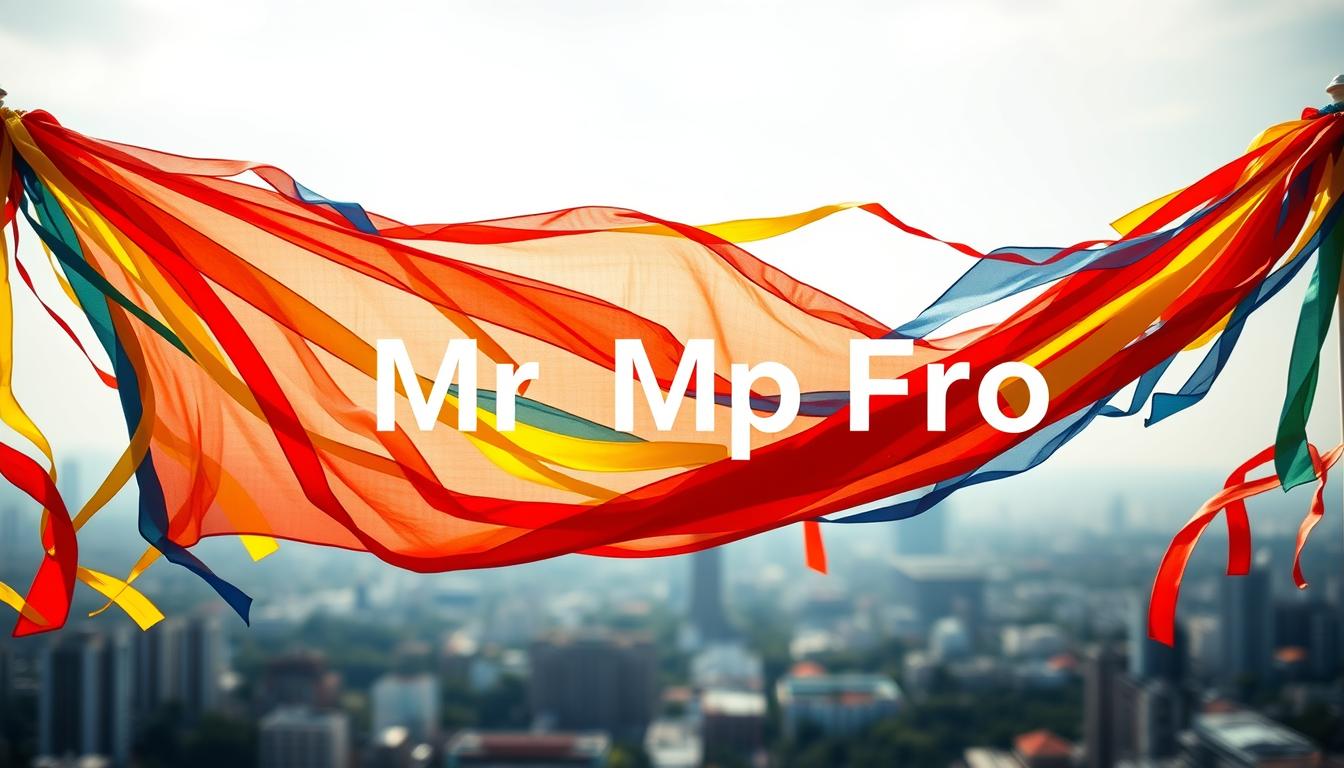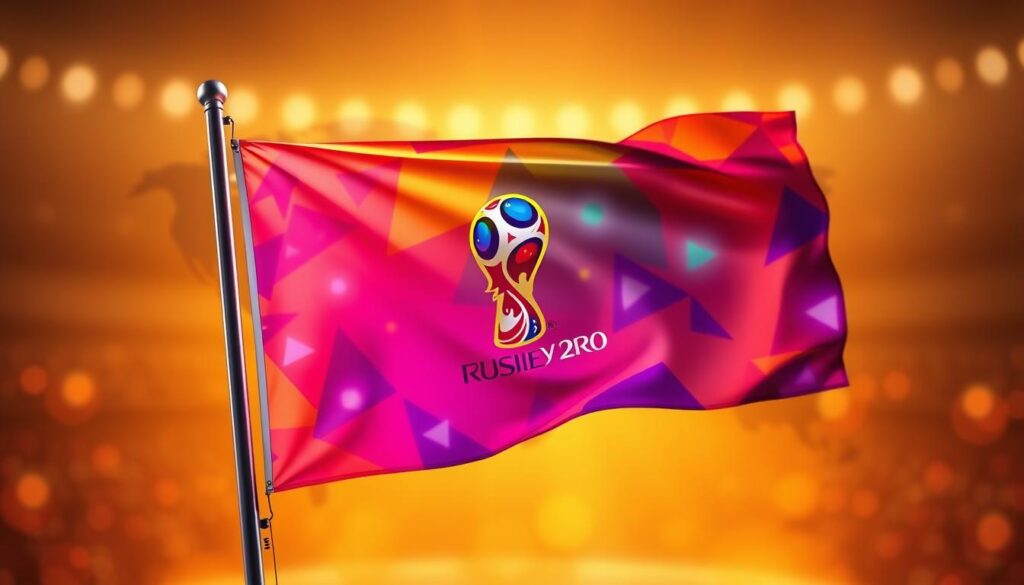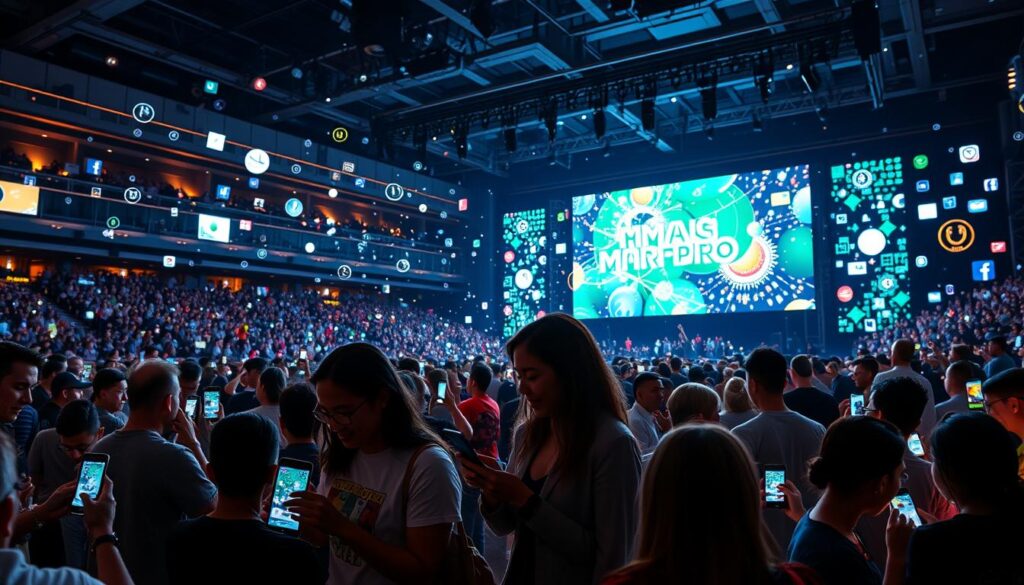
In 2014, Coca-Cola made history with the Happiness Flag, a groundbreaking digital campaign that engaged over 3.5 million fans worldwide. This initiative wasn’t just a marketing stunt—it was a cultural phenomenon that showcased the power of creativity and technology in uniting people across the globe.
The campaign was unveiled at the Arena de Sao Paulo ahead of the opening match of the 2014 FIFA World Cup. What made it truly remarkable was the inclusion of over 200,000 fan images from 207 countries, stitched together using innovative Photomosaic technology to create the world’s largest digital flag. This flag was more than just a symbol; it was a testament to the diversity and unity of global football fans.
Coca-Cola collaborated with international artists and experts like Robert Silvers to bring this vision to life. The campaign’s success wasn’t just about numbers—it redefined how brands could engage with consumers on a global scale. By leveraging digital platforms, Coca-Cola created a shared experience that transcended borders, making it one of the most inclusive and impactful campaigns in the company’s history.
As you explore this article, you’ll discover how the Happiness Flag became a landmark in digital marketing, setting new standards for fan engagement and brand storytelling. It’s a story of creativity, technology, and the enduring power of connection.
Learn more about the intersection of creativity and technology in global campaigns by exploring this detailed analysis of innovative marketing strategies.
Campaign Overview and Global Impact
The 2014 FIFA World Cup served as the perfect stage for a historic digital activation that captivated millions. Unveiled during the opening match at Arena de Sao Paulo, the campaign showcased a massive digital flag created from over 220,000 fan-submitted photos. This initiative wasn’t just about numbers; it was a cultural milestone that redefined global engagement.
The flag, measuring 67 meters wide and 45 meters tall, was a masterpiece of digital photomosaic technology. Designed by renowned artists Speto and Tec, it featured images from 207 countries, ensuring every nation where Coca-Cola is sold was represented. This inclusive approach fostered a sense of unity among fans worldwide.
The campaign’s impact was profound, reaching over 2.8 billion viewers through live broadcasts. Fans engaged digitally via platforms like Facebook and Twitter, submitting photos and sharing experiences. This blend of physical display and digital interaction set a new standard for brand engagement, making the 2014 FIFA World Cup a landmark event in marketing history. The success of this campaign highlighted the power of creativity and technology in uniting a global audience.
Learn more about how global campaigns leverage digital strategies and e-commerce SEO to maximize reach.
Inside the Coca-Cola Happiness Flag Campaign
The 2014 FIFA World Cup™ provided the ultimate platform for a groundbreaking digital campaign that united millions of fans worldwide. This initiative was a masterclass in creativity and logistics, blending artistic vision with cutting-edge technology.
Creative Collaboration with International Artists
The campaign’s success hinged on collaboration with renowned artists Speto and Tec, who designed a vibrant canvas painting. This artwork was then digitized using photomosaic technology, with Robert Silvers playing a pivotal role in its execution. The result was a stunning 3,015-square-meter digital mosaic, crafted from over 220,000 fan-submitted photos.
Execution Strategy and Logistical Feats
Managing such a massive project required meticulous planning. The team ensured the flag’s installation at Arena de São Paulo, overcoming logistical challenges to display it during the opening match. Real-time media updates kept fans engaged globally, while the campaign’s infrastructure handled millions of submissions seamlessly.

Every person’s contribution was celebrated within the mosaic, symbolizing unity across 207 countries. This campaign not only set a new standard for global engagement but also demonstrated how creativity and technology can come together to create unforgettable experiences. For more insights into managing large-scale campaigns, visit mrmp.pro/credential/.
Design, Technology, and Social Media Integration
The 2014 FIFA World Cup™ showcased a perfect blend of creativity and innovation through a groundbreaking digital activation. This initiative harnessed the power of consumer content and social media to create an unforgettable experience for millions of soccer fans worldwide.
Harnessing Consumer Content and Hashtag Culture
The campaign’s core was built around fan-submitted images, collected through multiple platforms like Facebook, Instagram, Twitter, email, and a dedicated website. These images were then transformed into a massive digital mosaic, symbolizing global unity and shared passion for soccer.

Hashtags played a crucial role in amplifying fan engagement. By encouraging users to share their photos with specific tags, the campaign achieved viral reach, making it easier for fans to participate and feel connected to the global event.
The technology behind this project was equally impressive. Advanced photomosaic software converted thousands of images into a cohesive digital flag, creating an interactive experience where fans could locate their photos online. This innovative use of technology not only enhanced engagement but also set a new standard for digital marketing.
The integration of Brazilian street art added a vibrant, cultural touch to the campaign’s visual identity. This artistic influence, combined with robust digital platforms, ensured engagement remained high before, during, and after the event. The seamless blend of technology and social media allowed the campaign to scale globally while maintaining accessibility and user-friendliness.
Fan Participation and Content Marketing Success
Fan participation played a pivotal role in the success of the digital activation, creating a wave of engagement that resonated globally. By inviting fans to submit their photos through multiple platforms, the campaign ensured widespread participation, making everyone feel like a vital part of the experience.
Leveraging Multi-Platform Submissions
The simplicity of the submission process was key to its success. Fans could share their photos via Facebook, Twitter, Instagram, email, and even SMS, making it accessible to a broad audience. This multi-platform approach not only increased participation but also helped in reaching a diverse group of consumers.

Measuring Impact and Brand Visibility in Canada
The campaign’s impact was evident in Canada, where brand visibility saw a significant boost. With over 3.5 million fans engaged globally, the initiative demonstrated the power of combining digital and live experiences. The Trophy Tour, a key component of the campaign, further captured consumer interest, extending the campaign’s reach and creating memorable interactions.
The integration of user-generated content strengthened the connection between the brand and its audience. Fans could see their photos as part of a larger mosaic, giving them a sense of pride and belonging. This approach not only enhanced engagement but also highlighted the brand’s innovative strategy in content marketing.
The success in Canada and other markets underscored the effectiveness of a community-focused approach. By leveraging street-level engagement and digital platforms, the campaign created a shared experience that transcended borders, setting a new standard for future activations. Learn more about how search engine optimization played a role in amplifying the campaign’s reach.
Conclusion
The 2014 FIFA World Cup campaign stands as a landmark in innovative marketing, showcasing the power of creativity and technology. At the heart of this initiative was the world’s largest digital flag, a 67-meter-wide mosaic crafted from over 220,000 fan-submitted photos. This monumental project, displayed at the Arena de Sao Paulo, symbolized unity across 207 countries, making it a cultural milestone.
The campaign’s success hinged on strategic planning and robust execution. By integrating cutting-edge photomosaic technology with artistic design, it set a new standard for global engagement. The initiative not only united fans through sport and art but also demonstrated how brands can leverage digital platforms to create shared experiences.
In Canada, the campaign significantly boosted brand visibility, highlighting the effectiveness of community-focused strategies. The seamless blend of digital and live experiences left a lasting impact on consumer engagement, inspiring future activations. This campaign serves as a testament to the enduring power of creativity and connection on a global scale.

 Coca-Cola’s ‘Happiness Flag’: How a Global Digital Activation Engaged 3.5 Million Fans
Coca-Cola’s ‘Happiness Flag’: How a Global Digital Activation Engaged 3.5 Million Fans
0 Comment